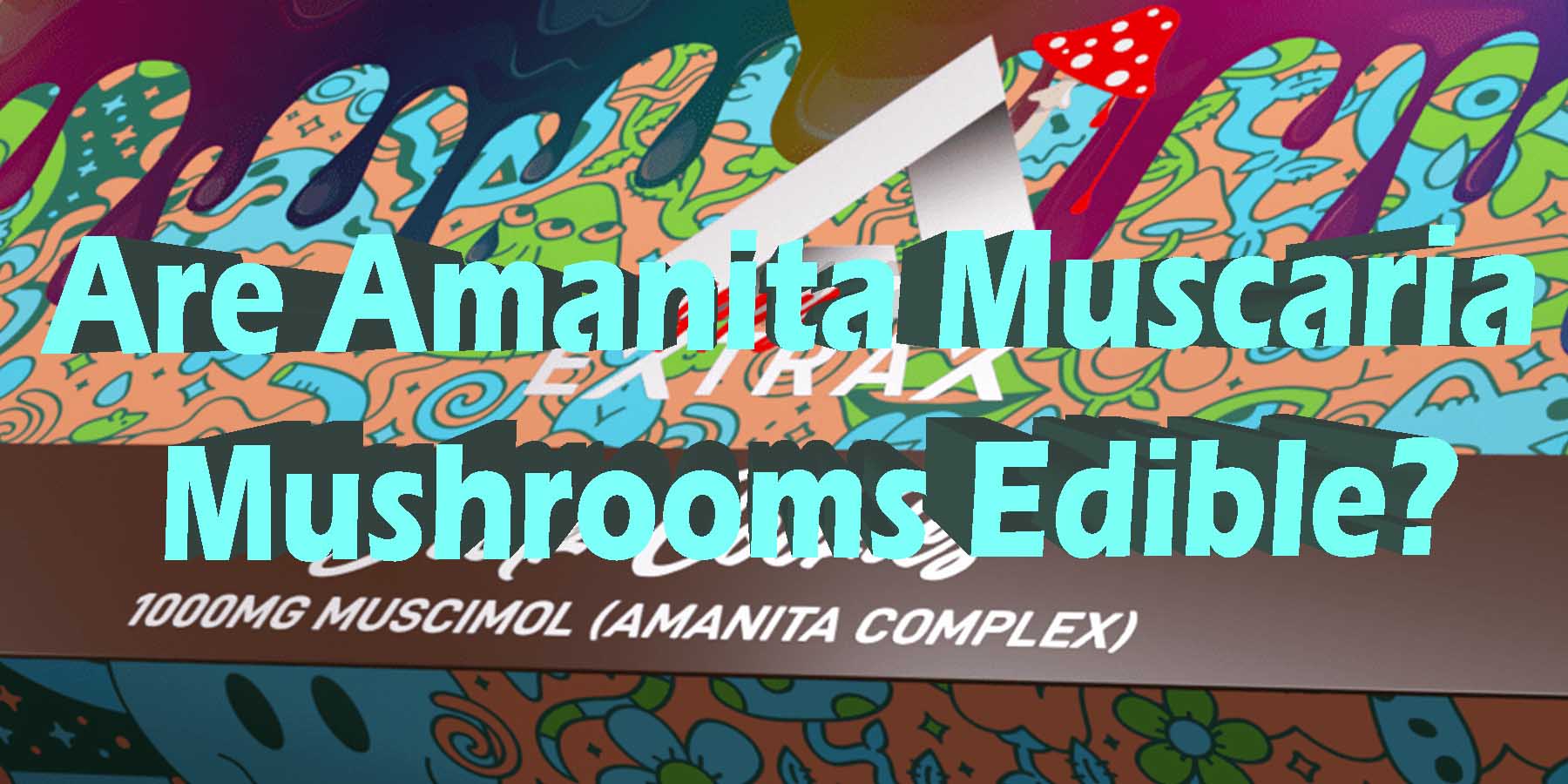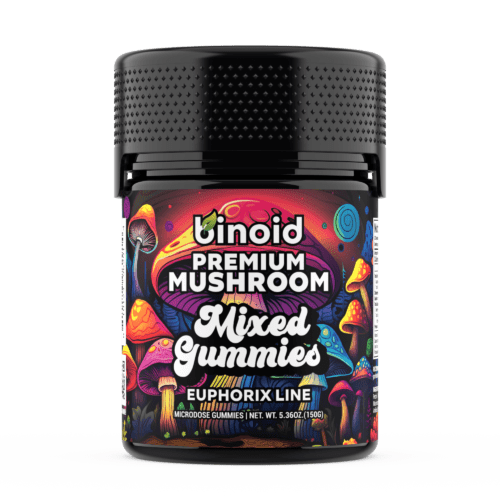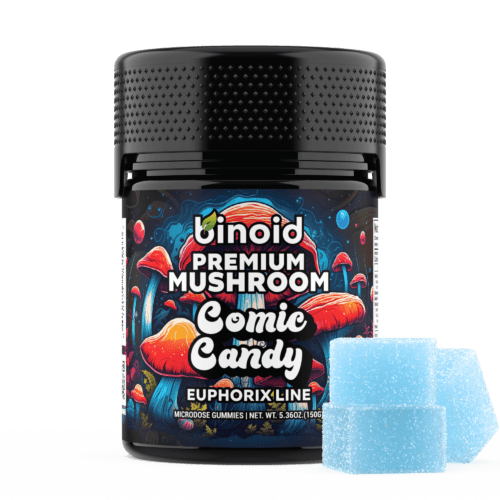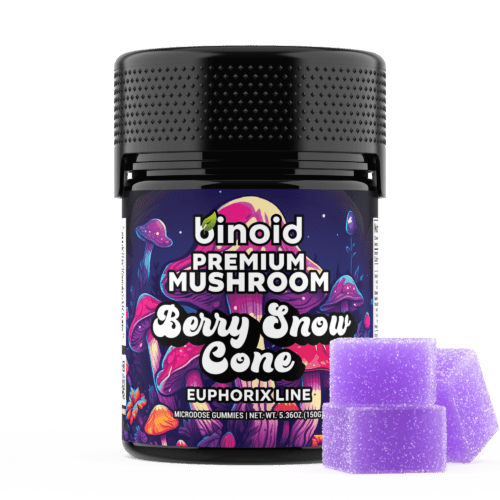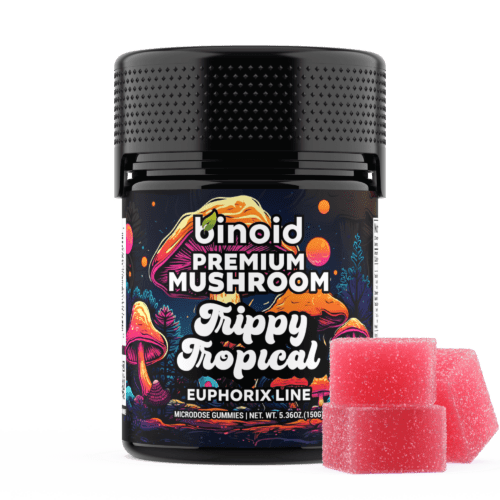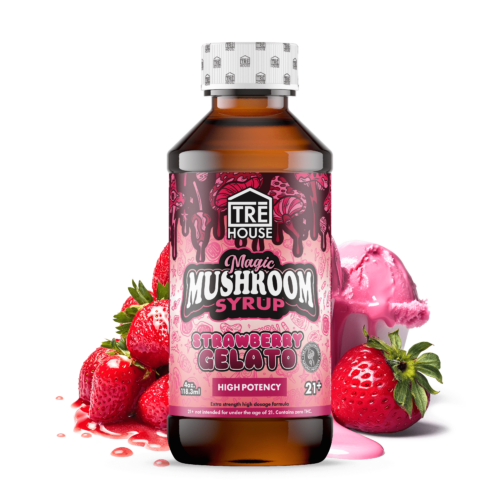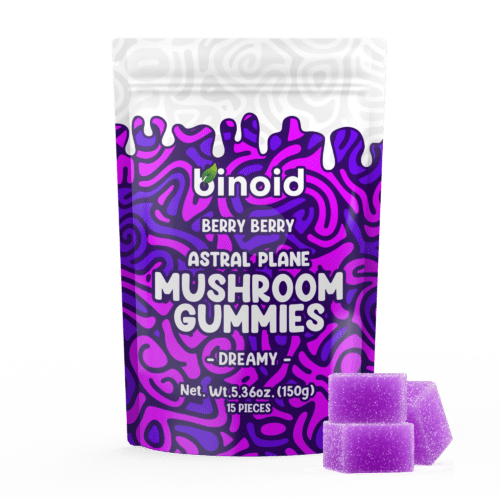Amanita Muscaria is a genus of mushrooms that comprises several species, some of which are among the most toxic mushrooms known, while others are edible and sought after for culinary use. The genus is widely known for its distinctive appearance, typically having a brightly colored cap with white gills and often with warts or volval remnants on the cap, though the appearance can vary significantly between species.
Now, you might be wondering which amanita mushrooms are edible and which are not. Good question and one we’re going to answer that important question here today.
To Buy Amanita Muscaria Mushroom Products Click Here
Recommended products
Why are Some Amanita Mushrooms Toxic and Not Edible?
Amanita mushrooms, including some of the most toxic known fungi, contain a variety of chemical compounds that are poisonous to humans and other animals. These toxins are primarily defensive mechanisms for the mushrooms, deterring predators from eating them and thus helping the fungi to survive and reproduce.
In fact, the toxic mushroom species that contain compounds such as alpha-amanitin and phalloidin are particularly dangerous. Why? Well, because their effects may not be immediate, delaying symptoms of poisoning for several hours, at which point the toxins may have already caused significant damage to the body.
The primary toxins found in poisonous Amanita species are:
- Amatoxins: These are cyclic peptides that inhibit RNA polymerase II, an essential enzyme in the synthesis of messenger RNA (mRNA). Without proper mRNA synthesis, cells cannot produce proteins and eventually die. Amatoxins are heat-stable and are not destroyed by cooking.
- Phallotoxins: Although less clinically significant than amatoxins because they’re not absorbed through the gastrointestinal tract to a large extent, phallotoxins also have a role in the overall toxicity of Amanita mushrooms. They affect the actin filaments in cells, which can cause cell death and contribute to the toxic effects if they enter the bloodstream directly.
- Orellanin: Found in some Amanita species, this toxin causes oxidative stress and is known to cause delayed onset of symptoms, leading to renal failure.
- Muscarine: Found in some Amanita species, especially Amanita muscaria, this compound stimulates the parasympathetic nervous system, which can result in a variety of symptoms such as sweating, salivation, and tear flow.
The reasons for the presence or absence of toxins in certain mushrooms are not entirely understood. However, the evolutionary reasons for the presence of these toxins in Amanita muscaria mushrooms may include deterring consumption by animals, inhibiting microbial growth, or even reducing competition with other plants or fungi by poisoning the local environment (though this is speculative). The high potency of these toxins means that even small amounts can be lethal to humans and other animals, a factor which may have led to their success in natural selection as a deterrent.
Recommended products
Dangerous Mushrooms You Should Not Eat
These are the most common ones you do not want to digest:
- Amanita Phalloides (Commonly known as the “Death Cap”) – It’s deadly poisonous and is the most infamous species in this genus. Consuming even a small amount of this mushroom can result in severe poisoning and potentially death due to its powerful toxins, amatoxins.
- Amanita Virosa (“Destroying Angel”) – is another dangerous species which’s also highly toxic and can be mistaken for edible varieties.
- Amanita ocreata (Also known as the Western North American Destroying Angel) – Similar to Amanita virosa, it’s highly toxic and can be fatal if ingested.
Why are Some Amanita Mushrooms Nontoxic and Alright to Eat Then?
The nontoxic Amanita species are safe to eat because they lack these harmful compounds. Mushroom species are defined by a complex set of genetic, biochemical, and ecological factors that determine their characteristics, including whether or not they produce toxins. Even closely related species can have vastly different profiles when it comes to the presence of toxic compounds.
Mushrooms You Can Eat
Despite the existence of edible Amanita species, caution is strongly advised when choosing to eat these edible species within the Amanita genus:
- Amanita Caesarea (Caesar’s Mushroom) – Considered a delicacy in some countries.
- Amanita Rubescens (The Blusher) – This mushroom is considered edible by some; however, it requires careful preparation to detoxify it as it can contain toxins that are removed through cooking.
What About Amanita Muscaria?
Commonly known as the fly agaric or fly amanita, this is a mushroom species that’s notorious for its psychoactive properties, which are primarily due to the presence of the compounds ibotenic acid and muscimol. In its raw or improperly prepared state, it can be poisonous and consuming it can lead to severe gastrointestinal upset and neurological disorders.
However, it’s considered edible in some cultures after proper preparation that reduces its toxicity. Here’s how Amanita muscaria can be made edible:
- Parboiling: The traditional method to detoxify Amanita muscaria for consumption is by parboiling it. This means boiling the mushrooms in plentiful water for a significant amount of time, often for at least 15 minutes to an hour. This process leaches out the water-soluble toxins, which are then discarded with the water.
- Multiple Water Changes: It’s important to change the water several times during the boiling process. Some sources recommend changing the water at least twice to ensure that most of the ibotenic acid and muscimol have been removed.
- Discarding Water: After parboiling, it’s critical to discard the water used for boiling because it contains the soluble toxins. Never use it for any other cooking purpose.
- Thorough Cooking: Even after boiling, it is advisable to cook the amanita mushrooms thoroughly before consumption. Some toxins might still be present in smaller amounts, and cooking can help to degrade them further.
- Small Quantities: Even properly prepared, consuming Amanita muscaria in large quantities might still be risky. It is generally recommended to eat small amounts, especially if you are not familiar with the mushroom or its effects.
- Individual Sensitivity: People can react differently to the same mushroom, even when it’s prepared in the same way. What is safe for one person may not be safe for another, so caution is always advised.
- Local Knowledge: In regions where Amanita muscaria is traditionally eaten, such as some parts of Russia, knowledge of preparation techniques is often passed down through generations and may involve more detailed or specific steps that ensure safety.
It’s very important to note that the margin of error in detoxifying Amanita muscaria is very slim, and it should not be attempted by individuals who are not thoroughly educated in the process.
At Binoid, you can buy Amanita Mushroom products online including edibles, chocolates, tinctures, and even vapes legally here. Made here in the USA, and 100% natural, these Amanita Mushroom (Muscimol complex) products are legal in all states except Louisiana.
Amanita Muscaria Final Thoughts
Given the high stakes of making a mistake, it’s strongly advised that people do not forage Amanita mushrooms for consumption unless they are expert mycologists who can accurately identify the safe species. The general advice for mushroom foraging is never to eat any wild mushroom unless it has been positively identified as safe by a well-qualified individual.

